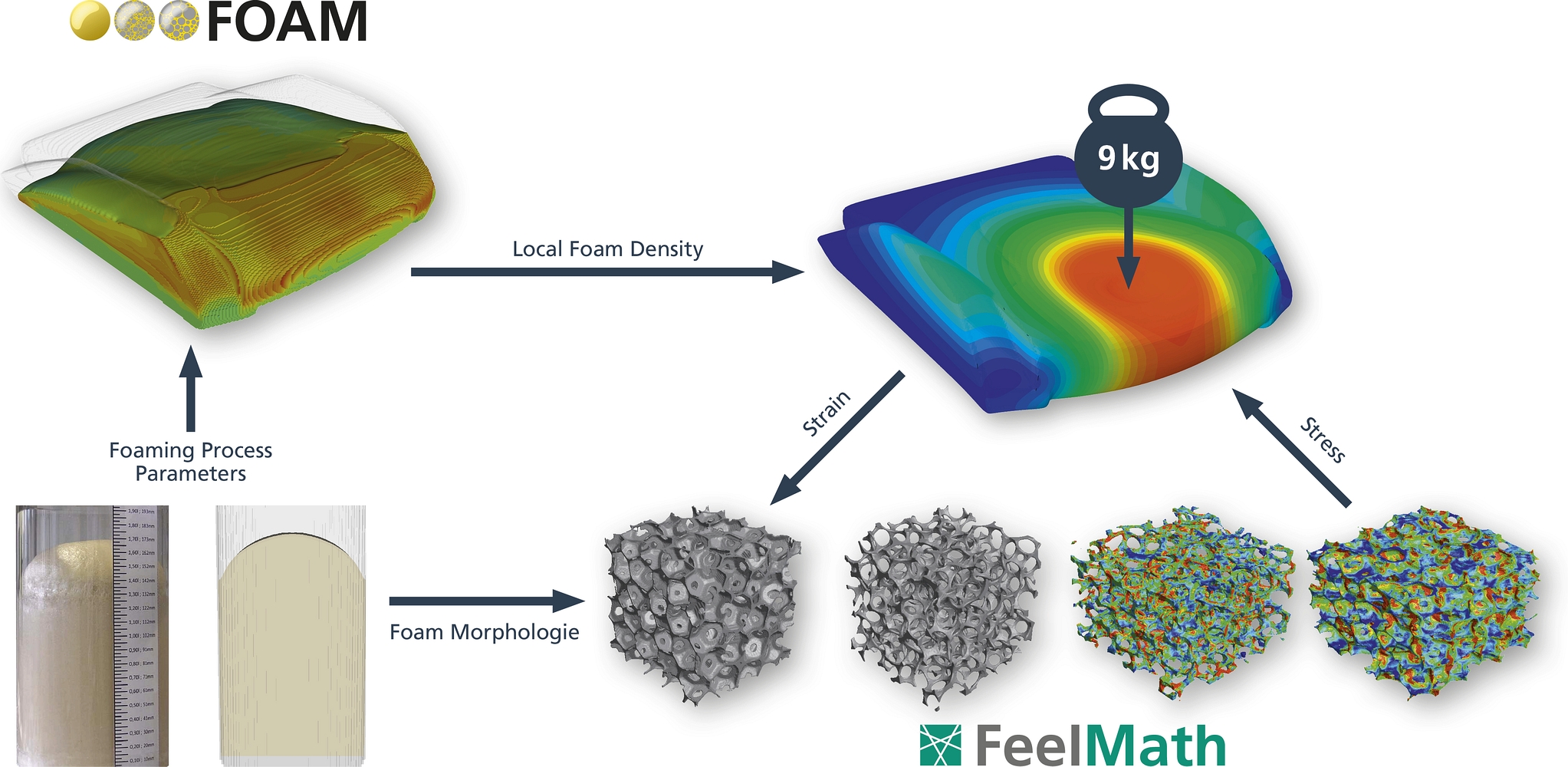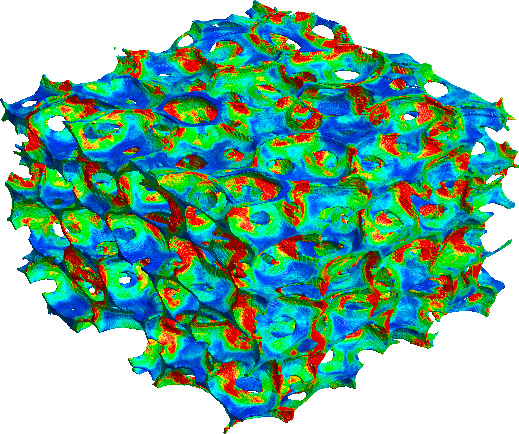Foam products have various lightweight properties that make them attractive for a wide variety of applications. They are used, for example, in shock absorption, acoustics or even thermal insulation. Industries such as the automotive, aircraft, refrigeration, construction and packaging industries in particular benefit from the features to obtain more cost-effective products.
Our digital twins enable the complete digitization of the development, design and manufacturing processes of foam components – taking into account the local foam properties.


